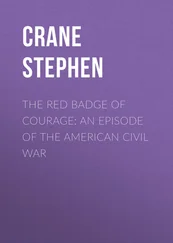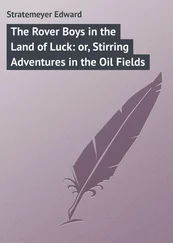Stephen Fry - The Ode Less Travelled - Unlocking The Poet Within
Здесь есть возможность читать онлайн «Stephen Fry - The Ode Less Travelled - Unlocking The Poet Within» весь текст электронной книги совершенно бесплатно (целиком полную версию без сокращений). В некоторых случаях можно слушать аудио, скачать через торрент в формате fb2 и присутствует краткое содержание. Жанр: Старинная литература, на английском языке. Описание произведения, (предисловие) а так же отзывы посетителей доступны на портале библиотеки ЛибКат.
- Название:The Ode Less Travelled: Unlocking The Poet Within
- Автор:
- Жанр:
- Год:неизвестен
- ISBN:нет данных
- Рейтинг книги:3 / 5. Голосов: 1
-
Избранное:Добавить в избранное
- Отзывы:
-
Ваша оценка:
- 60
- 1
- 2
- 3
- 4
- 5
The Ode Less Travelled: Unlocking The Poet Within: краткое содержание, описание и аннотация
Предлагаем к чтению аннотацию, описание, краткое содержание или предисловие (зависит от того, что написал сам автор книги «The Ode Less Travelled: Unlocking The Poet Within»). Если вы не нашли необходимую информацию о книге — напишите в комментариях, мы постараемся отыскать её.
The Ode Less Travelled: Unlocking The Poet Within — читать онлайн бесплатно полную книгу (весь текст) целиком
Ниже представлен текст книги, разбитый по страницам. Система сохранения места последней прочитанной страницы, позволяет с удобством читать онлайн бесплатно книгу «The Ode Less Travelled: Unlocking The Poet Within», без необходимости каждый раз заново искать на чём Вы остановились. Поставьте закладку, и сможете в любой момент перейти на страницу, на которой закончили чтение.
Интервал:
Закладка:
He even manages quadruple rhyme:So that their plan and prosody are eligible,Unless, like Wordsworth, they prove unintelligible.
Auden mimics this kind of feminine and triple-rhyming in, appropriately enough, his ‘Letter to Lord Byron’.Is Brighton still as proud of her pavilionAnd is it safe for girls to travel pillion?To those who live in Warrington or WiganIt’s not a white lie, it’s a whacking big ’un.Clearer than Scafell Pike, my heart has stamped onThe view from Birmingham to Wolverhampton.
Such (often annoyingly forced and arch) rhyming is sometimes called hudibrastic , after Samuel Butler’s Hudibras (the seventeenth-century poet Samuel Butler, not the nineteenth-century novelist of the same name), a mock-heroic verse satire on Cromwell and Puritanism which includes a great deal of dreadful rhyming of this kind:There was an ancient sage philosopherThat had read Alexander Ross overSo lawyers, lest the bear defendantAnd plaintiff dog, should make an end on’t
Hudibras also offers this stimulating example of assonance rhyming:And though his countrymen, the Huns,Did stew their meat between their bums.
Rich Rhyme
The last species worthy of attention is rich rhyme . 7I find it rather horrid, but you should know that essentially it is either the rhyming of identical words that are different in meaning ( homonyms )…Rich rhyme is legal tender and quite soundWhen words of different meaning share a soundWhen neatly done the technique’s fineWhen crassly done you’ll cop a fine.
…or the rhyming of words that sound the same but are different in spelling and meaning ( homophones ).Rich rhyming’s neither fish nor fowlThe sight is grim, the sound is foul.John Milton said with solemn weight,‘They also serve who stand and wait.’
Technically there is a third kind, where the words are identical in appearance but the same neither in sound nor meaning, which results in a kind of rich eye-rhyme:He took a shot across his bowFrom an archer with a bow.This rhyme is not the best you’ll ever readAnd surely not the best you’ve ever read.
Byron rhymes ours/hours, heir/air and way/away fairly successfully, but as a rule feminine rich rhymes are less offensive to eye and ear for most of us than full-on monosyllabic rich rhymes like whole/hole and great/grate . Thus you are likely to find yourself using produce/ induce, motion/promotion and so on much more frequently than the more wince-worthy maid/made, knows/nose and the like.
A whole poem in rich rhyme? Thomas Hood, a Victorian poet noted for his gamesome use of puns and verbal tricks, wrote this, ‘A First Attempt in Rhyme’. It includes a cheeky rich-rhyme triplet on ‘burns’.If I were used to writing verse,And had a muse not so perverse,But prompt at Fancy’s call to springAnd carol like a bird in Spring;Or like a Bee, in summer time,That hums about a bed of thyme,And gathers honey and delightsFrom every blossom where it ’lights;If I, alas! had such a muse,To touch the Reader or amuse,And breathe the true poetic vein,This page should not be fill’d in vain!But ah! the pow’r was never mineTo dig for gems in Fancy’s mine:Or wander over land and mainTo seek the Fairies’ old domain–To watch Apollo while he climbsHis throne in oriental climes;Or mark the ‘gradual dusky veil’Drawn over Tempe’s tuneful vale,In classic lays remember’d long–Such flights to bolder wings belong;To Bards who on that glorious height,Of sun and song, Parnassus hight, 8Partake the divine fire that burns,In Milton, Pope, and Scottish Burns,Who sang his native braes and burns.For me a novice strange and new,Who ne’er such inspiration knew,To weave a verse with travail sore,Ordain’d to creep and not to soar,A few poor lines alone I write,Fulfilling thus a lonely rite,Not meant to meet the Critic’s eye,For oh! to hope from such as I,For anything that’s fit to read,Were trusting to a broken reed.
II
Rhyming Arrangements
The convention used when describing rhyme-schemes is literally as simple as abc . The first rhyme of a poem is a , the second b , the third c , and so on:
At the round earth’s imagined corners, blow
a
Your trumpets, angels; and arise, arise
b
From death, your numberless infinities
b
Of souls, and to your scattered bodies go;
a
All whom the flood did, and fire shall o’erthrow,
a
All whom war, dearth, age, agues, tyrannies,
b
Despair, law, chance, hath slain, and you whose eyes
b
Shall behold God, and never taste death’s woe.
a
But let them sleep, Lord, and me mourn a space;
c
For if, above all these, my sins abound,
d
’Tis late to ask abundance of thy grace
c
When we are there. Here on this lowly ground,
d
Teach me how to repent; for that’s as good
e
As if thou hadst sealed my pardon with thy blood.
e JOHN DONNE: Sonnet: ‘At the round earth’s imagined corners’
This particular abba abba cdcd ee 9arrangement is a hybrid of the Petrarchan and Shakespearean sonnets’ rhyme-schemes, of which more in Chapter Three.
As to the descriptions of these layouts, well, that is simple enough. There are four very common forms. There is the COUPLET…So long as men can breathe and eyes can see So long lives this, and this gives life to thee .
…and the TRIPLET:

In the poetry of the Augustan period (Dryden, Johnson, Swift, Pope etc.) you will often find triplets braced in one of these long curly brackets, as in the example above from the Prologue to Dryden’s tragedy, All For Love . Such braced triplets will usually hold a single thought and conclude with a full stop.
Next is CROSS-RHYMING, which rhymes alternating lines, abab
etc:I wandered lonely as a cloud That floats on high o’er vales and hills ,When all at once I saw a crowd ,A host, of golden daffodils ;
Finally there is ENVELOPE RHYME, where a couplet is ‘enveloped’ by an outer rhyming pair: abba , as in the first eight lines of the Donne poem, or this stanza from Tennyson’s In Memoriam .The yule-log sparkled keen with frost ,No wing of wind the region swept ,But over all things brooding slept The quiet sense of something lost .
You might have noticed that in the cross-rhyme and envelope-rhyme examples above, Wordsworth and Tennyson indent rhyming pairs, as it were pressing the tab key to shift them to the right: this is by no means obligatory. Larkin does indent with ‘Toads’, perhaps gently to nudge our attention to the subtle consonance rhyming:Lots of folk live up lanes With fires in a bucket ,Eat windfalls and tinned sardines –They seem to like it .
While in his ‘truly rhymed’ poem ‘The Trees’ he presents the envelope-rhymed stanzas without indentation:The trees are coming into leaf Like something almost being said .The recent buds relax and spread ,Their greenness is a kind of grief .
Naturally, there are variations on these schemes: Wordsworth ends each cross-rhymed stanza of ‘Daffodils’ with a couplet, for example ( abbacc ). The world of formal rhyme-schemes awaits our excited inspection in the next chapter, but without delving into neurolinguistics and the deeper waters of academic prosody I really do not believe there is much more we need to know about rhyming in the technical sense. We have met all the types we are likely to meet and seen ways in which they may be arranged. The questions that concern us next are how and why ?
Читать дальшеИнтервал:
Закладка:
Похожие книги на «The Ode Less Travelled: Unlocking The Poet Within»
Представляем Вашему вниманию похожие книги на «The Ode Less Travelled: Unlocking The Poet Within» списком для выбора. Мы отобрали схожую по названию и смыслу литературу в надежде предоставить читателям больше вариантов отыскать новые, интересные, ещё непрочитанные произведения.
Обсуждение, отзывы о книге «The Ode Less Travelled: Unlocking The Poet Within» и просто собственные мнения читателей. Оставьте ваши комментарии, напишите, что Вы думаете о произведении, его смысле или главных героях. Укажите что конкретно понравилось, а что нет, и почему Вы так считаете.










